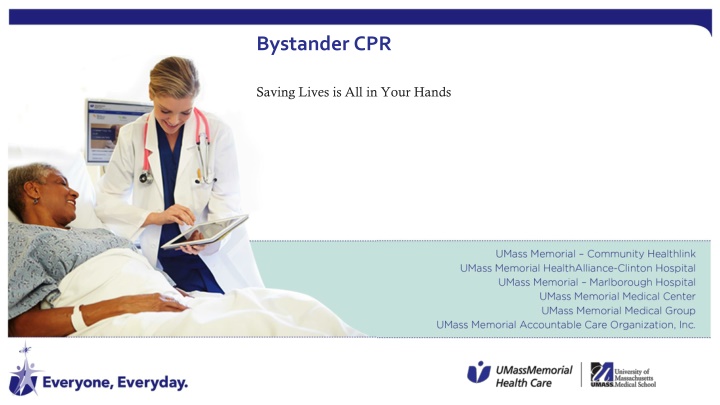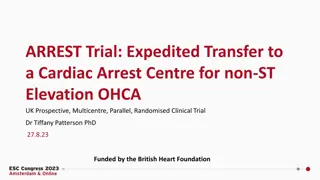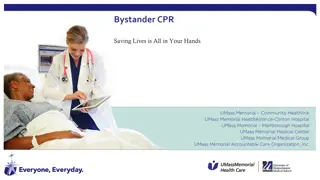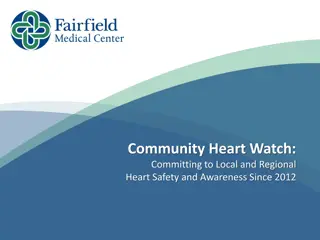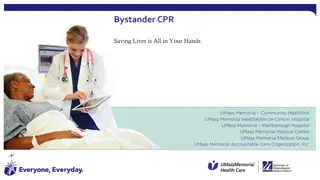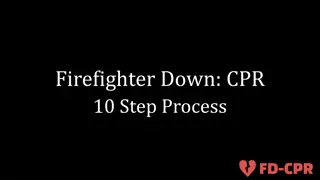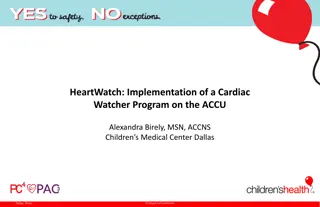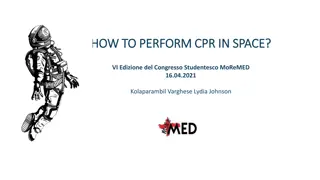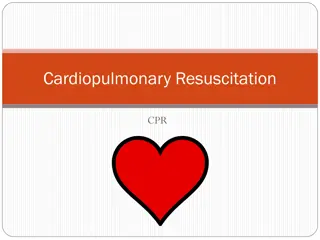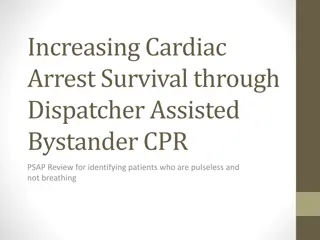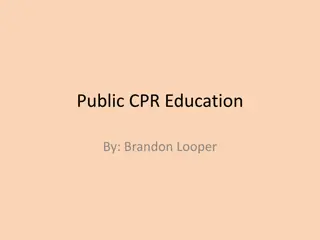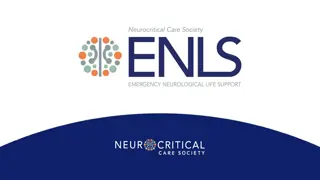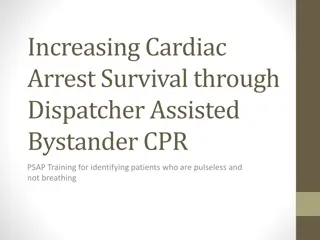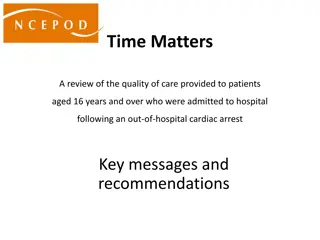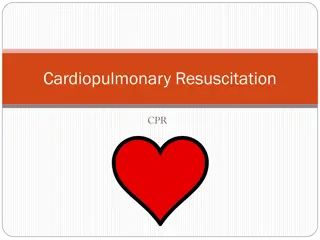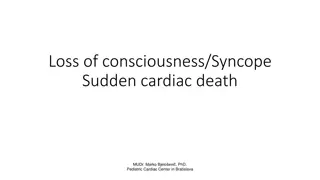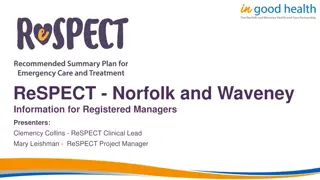Bystander CPR: Steps to Save Lives During Cardiac Arrest
Learn how to perform hands-only CPR effectively in case of cardiac arrest. Understand the importance of quick action, proper compression rate, and the Good Samaritan law. Discover facts about sudden cardiac arrest and why bystander CPR can significantly increase survival rates. Follow a guide on what to do when someone collapses, including calling 911, checking responsiveness, and using an AED if available.
Download Presentation

Please find below an Image/Link to download the presentation.
The content on the website is provided AS IS for your information and personal use only. It may not be sold, licensed, or shared on other websites without obtaining consent from the author.If you encounter any issues during the download, it is possible that the publisher has removed the file from their server.
You are allowed to download the files provided on this website for personal or commercial use, subject to the condition that they are used lawfully. All files are the property of their respective owners.
The content on the website is provided AS IS for your information and personal use only. It may not be sold, licensed, or shared on other websites without obtaining consent from the author.
E N D
Presentation Transcript
Bystander CPR Saving Lives is All in Your Hands
Objectives List the steps for performing hands-only cardiopulmonary resuscitation (CPR). Identify the compression rate range for performing effective CPR. Explain the significance of the Good Samaritan law for bystanders who observe a person experiencing a cardiac arrest. 2
Facts About Sudden Cardiac Arrest Leading cause of death Usually occurs at home Victims often over age 50 More than 400 deaths in Worcester County each year Survivors are among those who receive bystander CPR 3
Bystanders and CPR For victims of a cardiac arrest that is observed by bystanders: Two out of three victims don t receive bystander CPR before emergency medical services (EMS) arrive. This greatly reduces their chances of survival. Hands-only CPR is easier to perform than traditional CPR, is effective and may lead to more bystander CPR helping victims. The only bad CPR is no CPR. 4
Steps for How to Perform When someone collapses and seems lifeless: 1. Call 911, place phone on speaker mode to leave your hands free. 2. Check responsiveness of the victim. 3. Ask if there is a defibrillator nearby. 4. Place the victim on a flat surface if possible. 5. Perform hands-only CPR. 5
Step 1-Call 911 When someone collapses, act as quickly as possible. When using a cellphone, place it on speaker mode if possible. 911 operators can help guide you through performing CPR and keep you posted on when help will arrive. 6
Step 2-Check Responsiveness Check Responsiveness Gently shake the victim and ask if he/she is OK. If the victim isn t breathing, start CPR. Many victims will continue breathing, but are unresponsive and their breathing is abnormal. If the victim is unresponsive and not breathing, or breathing abnormally, start CPR. 7
Step 3- Ask About a Defibrillator Ask if there s a defibrillator nearby and use it if necessary. 1. Automatic external defibrillators (AEDs) are devices that can help restart a cardiac arrest victim s heart if applied after collapse. 2. AEDs are located in many businesses, malls, airports, casinos and hospitals. 3. These devices will guide untrained bystanders how to use the AED each step of the way. 4. The AED will analyze the heart rhythm and guide the bystander to shock the victim if appropriate. 5. The device also will help guide the bystander in performing CPR. 8
Step 4-Place Victim on Flat, Hard Surface Place the victim on a hard, flat surface if possible. 1. CPR is more effective if the victim is on a flat or hard surface. 2. It s easier to give bystander CPR if kneeling at the victims side. 9
Step 5-Perform Hands-Only CPR Start Hands-only CPR 1. In CPR, you compress the victims heart, which helps blood circulate to the vital organs and keeps the victim alive until his/her heart can be restarted. 2. CPR is done in the center of the chest between the nipples. 3. With both hands, compress down two inches and release at a rate of 100 to 120 times per minute. Too slow doesn t pump enough blood. Too fast doesn t allow the heart to fill with enough blood. 4. Two inches is enough to squeeze the blood out for circulation. 5. Once you have pressed down two inches, release pressure fully and compress again. 6. You can use the song Staying Alive if you know it to time your compressions. 10
Saving Lives If we can increase bystander CPR so that all victims receive CPR when they suffer a cardiac arrest, we will save 50 or more lives each year. Hands-only CPR is very effective. The only bad CPR is no CPR. 11
Good Samaritan Laws Massachusetts and most states have Good Samaritan laws that protect and encourage bystanders to provide CPR and to use a defibrillator to save lives 12
Review of Steps for Responding When someone collapses and seems lifeless: 1. Call 911, place phone on speaker mode to leave your hands free. 2. Check responsiveness of the victim. 3. Ask if there is a defibrillator nearby. 4. Place the victim on a flat surface if possible. 5. Perform hands-only CPR. 13
